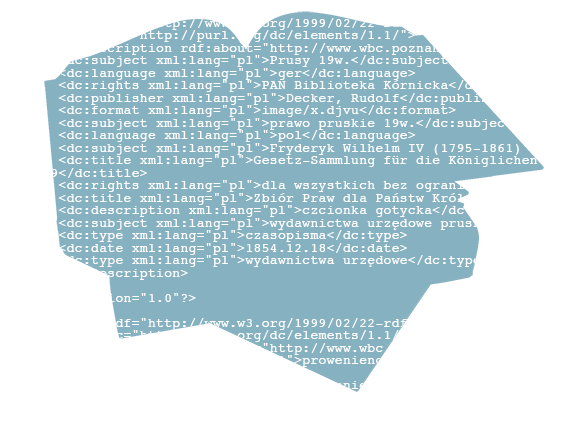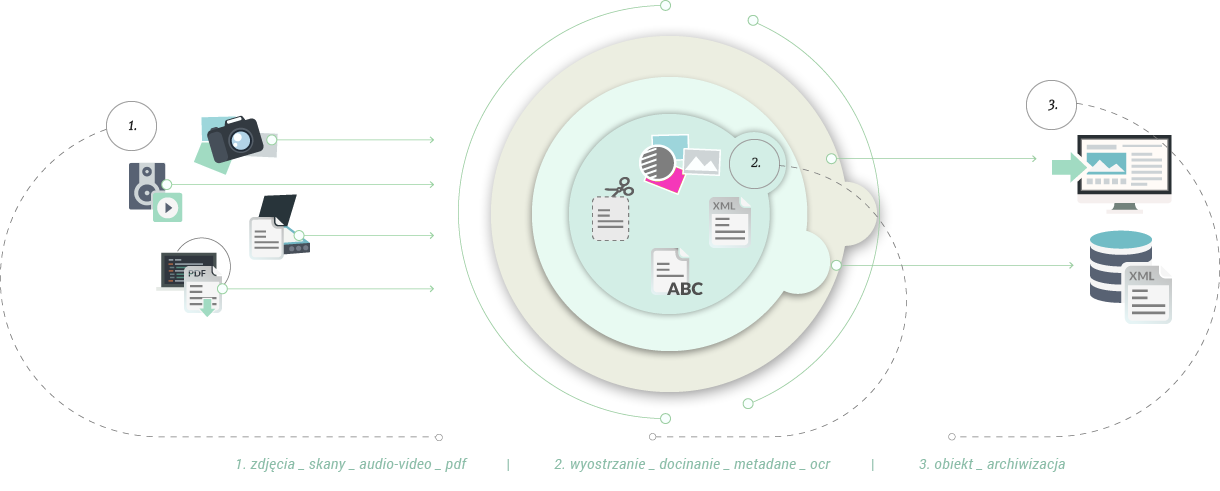Advantages of system dLab
 Searching and filtering tasks
Each element digitized in the dLab system is called a digitization task and reflects a single object in the digital library system (e.g. dLibra). The list of tasks related to the user is visible on the web portal. The user can search and filter tasks by various criteria, e.g. name, status, group membership, ID.
Searching and filtering tasks
Each element digitized in the dLab system is called a digitization task and reflects a single object in the digital library system (e.g. dLibra). The list of tasks related to the user is visible on the web portal. The user can search and filter tasks by various criteria, e.g. name, status, group membership, ID.
 Performing activities
Activities in the dLab system can be performed at the level of a single digitization task, as well as at the level of several or several tasks. It is also possible to perform specific actions for selected digitizing jobs from the list of all jobs.
Performing activities
Activities in the dLab system can be performed at the level of a single digitization task, as well as at the level of several or several tasks. It is also possible to perform specific actions for selected digitizing jobs from the list of all jobs.
 Access to archive files
If the dLab system is integrated with a data archiving system (e.g. dArceo), access to the archive packages takes place from the level of the dLab system web portal. Files, if necessary, are downloaded automatically by the dLab system from the archiving system and transferred to the user.
Access to archive files
If the dLab system is integrated with a data archiving system (e.g. dArceo), access to the archive packages takes place from the level of the dLab system web portal. Files, if necessary, are downloaded automatically by the dLab system from the archiving system and transferred to the user.
 Automatization of work
The dLab system can be integrated with any tool that automatically supports the digitization process. These can be tools launched from a list of commands, tools with a programming interface (API) or those available in cloud mode. In practice, each action performed by the editor can be supported by a work automation tool. These tools work regardless of whether the editor is logged in or not.
Automatization of work
The dLab system can be integrated with any tool that automatically supports the digitization process. These can be tools launched from a list of commands, tools with a programming interface (API) or those available in cloud mode. In practice, each action performed by the editor can be supported by a work automation tool. These tools work regardless of whether the editor is logged in or not.
 Full history of changes
The dLab system stores a full history of changes made by users, both in the context of the digitization task and individual activities. Changes to activity parameters, activity execution, error and other behaviors are stored and available to users of the dLab system. Thanks to this, you can easily capture any changes made to the system within individual objects.
Full history of changes
The dLab system stores a full history of changes made by users, both in the context of the digitization task and individual activities. Changes to activity parameters, activity execution, error and other behaviors are stored and available to users of the dLab system. Thanks to this, you can easily capture any changes made to the system within individual objects.
 User view
Each user in the dLab system has a view dedicated to him with a list of activities that are waiting to be handled by him. This allows users to focus on the work assigned to them and can also monitor the queue of tasks to be performed.
User view
Each user in the dLab system has a view dedicated to him with a list of activities that are waiting to be handled by him. This allows users to focus on the work assigned to them and can also monitor the queue of tasks to be performed.
As part of the software dLab we can distinguish a few key elements with which users work:
 Task
Task is a basic element in the system dLab. It is a set of actions to be implemented in the context of digitization specific position (eg. Book number, magazines, audio and video). The position we mean here an element which after undergoing digitization becomes a standalone digital object. The progress of the task is monitored by the system dLab. The steps in the framework of the tasks performed by assigned users or machines, for example. Act file preparation mothers (master files) is performed by members of the group scanning, and archiving files action master is performed by the automatic storage system dArceo. Since some operations may be limited kolejnościowo, the task takes place in stages, for example. First, the act of preparing files mothers, and later action storing them in the system dArceo.
Task
Task is a basic element in the system dLab. It is a set of actions to be implemented in the context of digitization specific position (eg. Book number, magazines, audio and video). The position we mean here an element which after undergoing digitization becomes a standalone digital object. The progress of the task is monitored by the system dLab. The steps in the framework of the tasks performed by assigned users or machines, for example. Act file preparation mothers (master files) is performed by members of the group scanning, and archiving files action master is performed by the automatic storage system dArceo. Since some operations may be limited kolejnościowo, the task takes place in stages, for example. First, the act of preparing files mothers, and later action storing them in the system dArceo.
 Actions
Action - component part of the task that identifies the specific action to be performed under the whole task of digitization. This can be done by an authorized user (human) using the system dLab or by machine (utility computing). An example of a user operation is to prepare the mother file (master file). This is an action by the user because the user configures the device digitalizujące, then the results of digitization introduces yourself to the system dLab. An example of operations performed by the machine is to prepare a presentation file. The machine can convert the files to the master version of the presentation by using a user-defined conversion profile. Automatic used for this purpose, the outer tool, for example. FineReader engine in order to prepare PDF files (including text layer) or software DocumentExpress to form DjVu (with text layer).
Actions
Action - component part of the task that identifies the specific action to be performed under the whole task of digitization. This can be done by an authorized user (human) using the system dLab or by machine (utility computing). An example of a user operation is to prepare the mother file (master file). This is an action by the user because the user configures the device digitalizujące, then the results of digitization introduces yourself to the system dLab. An example of operations performed by the machine is to prepare a presentation file. The machine can convert the files to the master version of the presentation by using a user-defined conversion profile. Automatic used for this purpose, the outer tool, for example. FineReader engine in order to prepare PDF files (including text layer) or software DocumentExpress to form DjVu (with text layer).
We use cookies to ensure that we give you the best experience on our website. By using this website, you accept... terms and conditions in fullAccept













